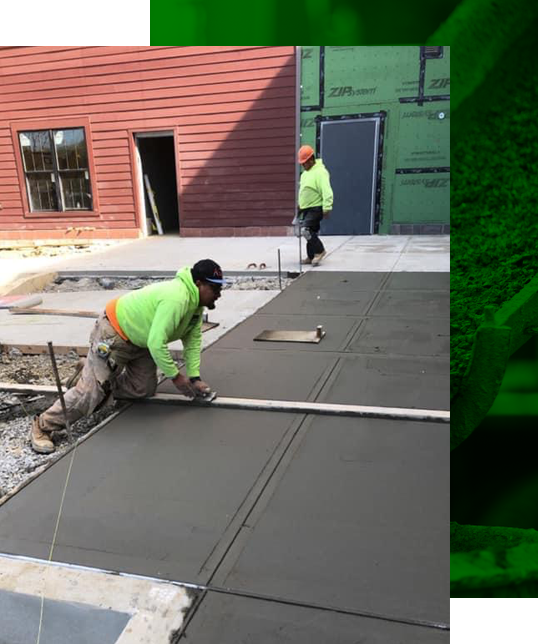Water Damage Restoration Los Angeles is the process of restoring a home or business to normal after it has been affected by water. This can be from natural causes such as flooding and storms, or it can be caused by internal issues such as malfunctioning appliances or sewage backup.
The first step is to assess the water damage. This will include looking at any standing water or stains as well as determining what category the water damage belongs to.
After a burst pipe or a severe flood, water damage restoration requires time to fix walls, floors and furniture. But before all that can be done, the affected areas must be dried out. That’s a task that is best left to professionals who have the right tools and equipment for the job. The drying out process also includes removing and disposing of any contaminated items in accordance with local regulations.
The first step is to assess the damage and determine how much water is present and where it is located. It is crucial to identify and contain the damage as soon as possible to minimize repercussions and prevent the spread of mold. This is why it’s important to call for emergency water mitigation as soon as possible after a flooding event.
Once the area has been assessed, it’s essential to turn off any power sources near the water damaged areas. This will help prevent any electrical hazards, and it will also allow the area to dry more quickly. After the power is turned off, it’s a good idea to open as many windows and doors as possible to increase air circulation and help replace any moisture with fresh dry air.
A water remediation specialist will use industrial-grade fans and dehumidifiers to remove the remaining moisture from the affected area. They may also use moisture meters to check the humidity levels and ensure that all areas are dried out thoroughly. The specialists may also install an inner-wall drying system, which involves drilling small holes in the wall above the sill plate and forcing air into the cavity. This method is known to be the most effective and efficient way of drying out a wet wall.
The water remediation specialist will also clean up any items that are likely to be contaminated by the floodwaters, such as mattresses, box springs, pillows, couches and carpeting. They will then bag and store these items in plastic containers for later cleaning with specialized chemicals that are designed to soak up the water.
It is a good idea to get rid of any items that are obviously beyond salvageable, such as rugs and other large furniture. These can be taken to the dump or donated to a local charity to benefit those in need.
Sanitizing
Once the water has been removed and the space is completely dry, it’s time to sanitize the area. This process involves wiping surfaces down with disinfectants and using antimicrobial treatments to prevent mold and bacteria from growing in the future. It also includes removing and replacing materials that were contaminated by the water damage. This may include drywall down to the studs, carpeting and carpet padding. A professional restoration service provider can handle this process for you. This is usually done before the drying and dehumidification process starts, as removing these items can allow for more efficient drying of the remaining building materials.
Water damage can be devastating for a home or commercial property. It can cause structural damage and lead to mold and mildew growth. It can also cause health problems for occupants of the property. It’s important to address water damage quickly to minimize the impact it has on your home or business.
When you experience water damage, it’s critical to hire a professional restoration company. The right water damage restoration company will use advanced equipment and procedures to restore your home or business back to normal. They will start by identifying the source of the water damage and determining its classification. This is important because different types of water damage can have different effects on the structure of your home or business.
It’s also important to note that a water damage assessment should be conducted by a certified restoration contractor. This ensures that the water damage repair work will meet your insurance requirements. The assessment will also help you understand the costs of the water damage restoration work.
Another benefit of a water damage restoration assessment is that it will help you avoid costly repairs down the road. For example, if you have a water leak, the water damage can cause rusting of metals and swelling of composite woods. If these issues aren’t addressed immediately, they could result in serious structural damage and cost you a lot of money to fix. The water damage restoration process can also save you time and money by preventing mold growth.
Disinfecting
As the water cleanup and drying process is being conducted, it is important to disinfect areas where mold spores may have gathered. This will help prevent further damage and health risks for the occupants of the home or business. Several different methods can be used to disinfect the area, including the use of bleach solutions, steam cleaning and dehumidifiers.
It is also essential to dispose of any contaminated materials as soon as possible after the water damage occurs. This will help prevent the spread of mold and other harmful bacteria to other areas of the building or home.
During the cleanup process, it is important to make sure that all items are fully dry before they are replaced. This is especially important when dealing with objects that are valuable or sentimental in nature. If these items are not treated correctly, they can suffer serious damage such as warping or rotting. It is also a good idea to consult with professional cleaners to determine which items are salvageable and which should be discarded.
Water can cause a lot of damage to household goods and can even lead to the growth of toxic mold if it is left untreated for more than 24 hours. In addition, leaking water can ruin carpeting, stain wallpaper, and damage paint. It is a good idea to invest in floors that are made to withstand moisture and choose paints and drywall that are made to resist water damage.
Once the water has been removed and the property is dry, the restoration process can begin. The first step is to set up fans and dehumidifiers to remove any remaining moisture. The amount of time this takes will vary depending on the severity of the water damage. In severe cases, drywall will need to be cut out and antimicrobial treatments will need to be applied.
Water damage can be a devastating event for homeowners and businesses. It can lead to structural damage and can even cause illnesses in the occupants of the building or home. Water damage restoration is a complicated process that requires skilled professionals to perform properly.
Cleaning
When it comes to cleaning water damage, the best way to do so is by hiring a professional company that specializes in such services. These companies will use the appropriate equipment to dry and clean your property thoroughly and make it safe for habitation once again. They also have the experience and knowledge needed to handle any situation that may arise. They will also make sure that all the moisture is removed from your property and that all the affected materials are cleaned, sanitized and deodorized. They will do this by using various techniques such as air movers, dehumidifiers and ozone generators to name just a few.
When you are in need of a water damage restoration company, it is important to choose one that has a good track record and many satisfied clients. This can be done by checking their website and social media platforms for reviews and testimonials. You should also ask about the type of equipment they use, if they have any certified experts in restoration and if their services are insured. It is also a good idea to check whether they offer emergency services and how quickly they respond to calls.
After the initial extraction of water, your property will need to be thoroughly dried to prevent mold growth and further damage. This is usually done by using large commercial fans and dehumidifiers to circulate the air and pull out moisture through evaporation. They can also help to ensure that any remaining moisture is removed from the wood, carpet and other materials.
Before the drying process can begin, you should remove any personal belongings from the area. This can include furniture, electronics, rugs and other items that have been affected by the water. Some of these items may be able to be saved, but others will need to be replaced. It is a good idea to take photos of the damage to help you remember what needs to be done once the restoration has been completed.
If any of the items have been soaked in sewage or other contaminants, you should dispose of them immediately as they can cause serious health issues for your family and pets. These contaminants can include bacteria, fungus and other microorganisms that could lead to disease and illness in your family.
















